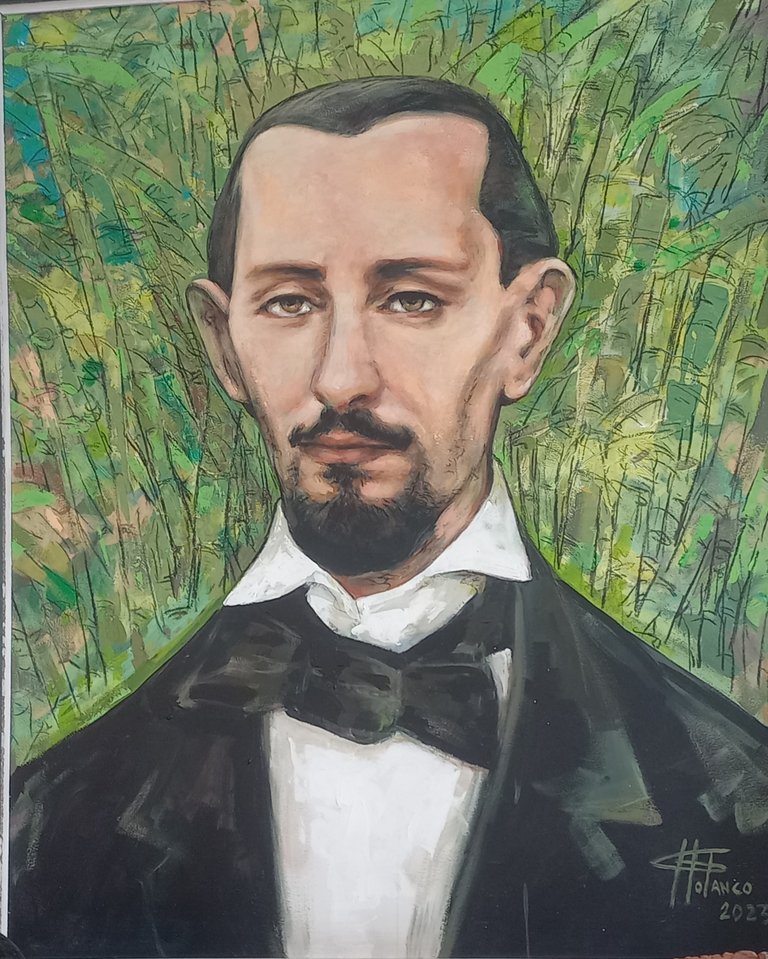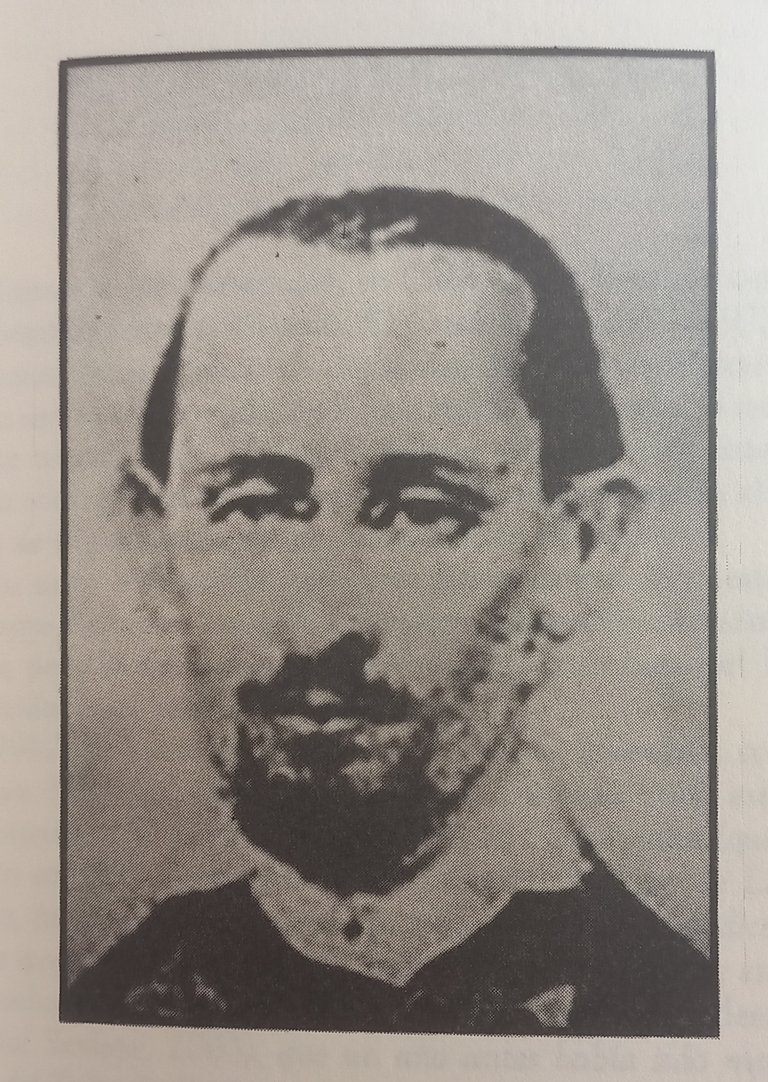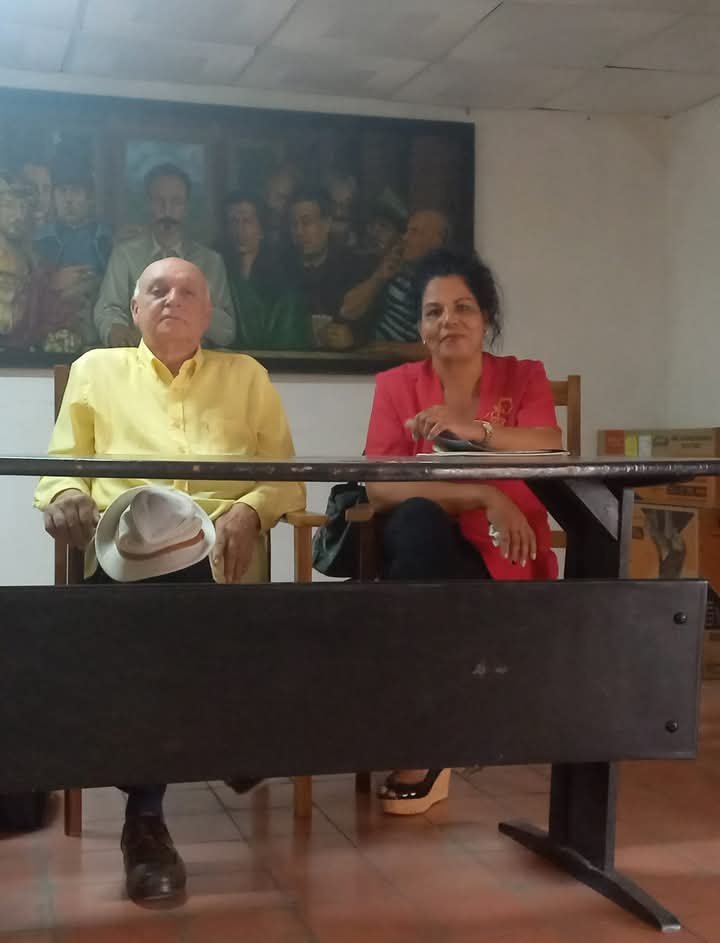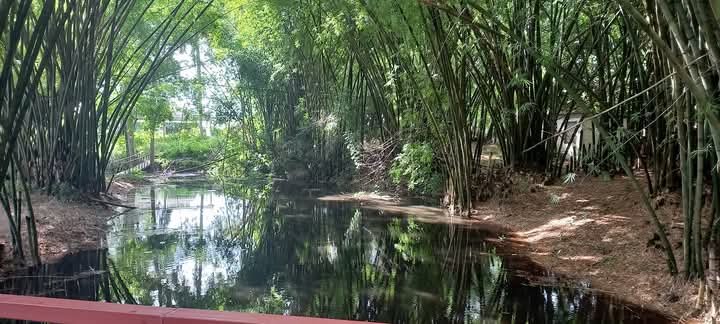
Retrato al oleo/lienzo de Gustavo Polanco / Portrait in oil/canvas by Gustavo Polanco
Amigos de la comunidad @literatos, me siento agradecida de la acogida que dan a mis textos. Hoy quiero hablarles del decimista cubano más importante del siglo XIX en Cuba: Juan Cristóbal Nápoles Fajardo, El Cucalambé.
Friends of the @literatos community, I feel grateful for the reception you give to my texts. Today I want to talk to you about the most important Cuban decimist of the 19th century in Cuba: Juan Cristóbal Nápoles Fajardo, El Cucalambé.

Imagen tomada del libro referido / Image taken from the referred book
Nápoles Fajardo, nació en Victoria de Las Tunas en 1829 y su desaparición se registra en 1861, en Santiago de Cuba. No se tiene referencia exacta de las circunstancias de este suceso.
Las condiciones económicas que envolvían a su familia, en aquella época, eran precarias. Junto a Isabel Rufina tuvo tres hijos, dos de ellos murieron a temprana edad,
El Cucalambé es el único poeta bucólico recogido por la historia de la literatura cubana, en este período. Jesús Orta Ruiz, Indio Naborí, publicó en 1974, Poesías completas, con obras pertenecientes al bardo tunero.
Según refiere la literatura, el escritor e investigador Carlos Tamayo Rodríguez es el máximo estudioso de El Cucalambé, dedicando varios cuadernos a su vida y obra.
Nápoles Fajardo, was born in Victoria de Las Tunas in 1829 and his disappearance was recorded in 1861, in Santiago de Cuba. There is no exact reference to the circumstances of this event. The economic conditions that surrounded his family, at that time, were precarious. Together with Isabel Rufina he had three children, two of them died at an early age, El Cucalambé is the only bucolic poet included in the history of Cuban literature, in this period. Jesús Orta Ruiz, Indio Naborí, published in 1974, Complete Poems, with works belonging to the bard from Las Tunas. According to literature, the writer and researcher Carlos Tamayo Rodríguez is the greatest scholar of El Cucalambé, dedicating several notebooks to his life and work.

Con Carlos Tamayo Rodriguez / With Carlos Tamayo Rodriguez
El Cucalambé desempeñó varios oficios durante sus 32 años de vida: Labrador en su estancia El Cornito, editor, periodista, dramaturgo, y pagador de Obras Públicas.
Fue acusado de sustraer el dinero destinado a Obras Públicas en Santiago de Cuba. En su ensayo El Cucalambé en Santiago de Cuba, Tamayo refiere que "al poeta lo hacen desaparecer justamente quienes sustrajeron el dinero".
Juan Cristóbal Nápoles Fajardo, publicó el libro de versos, Rumores del Hormigo, el resto de su obra està recogida por los investigadores mencionados y otros compiladores.
El Cucalambé fue reconocido por su poesía en décimas, sin embargo sus sonetos de alto vuelo poético, son compilados en diferentes volúmenes.
Les muestro el soneto recogido en Antología del soneto hispanoamericano, de Mirtha Yañez.
El Cucalambé held several jobs during his 32 years of life: Labrador in his ranch El Cornito, editor, journalist, playwright, and payer of Public Works. He was accused of stealing money destined for Public Works in Santiago de Cuba. In his essay El Cucalambé in Santiago de Cuba, Tamayo refers that "the poet is made to disappear precisely by those who stole the money."
Juan Cristóbal Nápoles Fajardo published the book of verses, Rumores del Hormigo, the rest of his work is collected by the aforementioned researchers and other compilers. El Cucalambé was recognized for his poetry in tenths, however his sonnets of high poetic flight are compiled in different volumes. I show you the sonnet collected in Anthology of the Hispano-American Sonnet, by Mirtha Yañez
Mi Guajira
Cuando en los prados de mi Cuba hermosa
mi güajira gentil llena su falda
de fresca hojas de jazmín y gualda
para jugar con ellas primorosa;
cuando vaga sencilla y majestuosa
sobre la verde alfombra de esmeralda,
y de flores bellísimas guirnaldas
se coloca en su frente candorosa;
las aves la saludan dulcemente,
el sol la baña con sus rayos rojos,
y en sus labios perfúmase el ambiente;
los guajiros adoránla de hinojos,
y yo embriagado de pasión vehemente,
de amor me abraso en sus divinos ojos.
Según el escritor Cintio Vitier, "El Cucalambé no cantaba al guajiro, sino desde éste", por lo que fue tachado de folklorista. La décima fue desarrollada por Nápoles Fajardo, fundamentalmente en la versión oral y escrita.
La figura del poeta bucólico está rodeada por la misteriosa desaparición y el hecho de que su poesía fue objeto de plagio en varias ocasiones.
Sobre Juan Cristóbal Nápoles Fajardo hay mucho que hablar, su legado es tradición cultural cubana, innumerables poetas lo toman como inspiración en sus décimas.
Una décima muy conocida del Indio Naborí agazaja la impronta del decimista más importante del siglo XIX, con una décima, que además, fue musicalizada.
According to the writer Cintio Vitier, "El Cucalambé did not sing to the guajiro, but from it", for which he was labeled a folklorist. The décima was developed by Nápoles Fajardo, mainly in the oral and written version. The figure of the bucolic poet is surrounded by the mysterious disappearance and the fact that his poetry was the subject of plagiarism on several occasions.
There is a lot to talk about Juan Cristóbal Nápoles Fajardo, his legacy is Cuban cultural tradition, countless poets take him as inspiration in their décimas. A well-known décima by Indio Naborí bears the imprint of the most important decimist of the 19th century, with a décima, which was also set to music:
Décima
Viajera peninsular,
¡cómo te has aplatanado!
¿Qué sinsonte enamorado
te dio cita en el palmar?
Dejaste viña y pomar
soñando caña y café,
y tu alma española fue
canción de arado y guataca
cuando al vaivén de una hamaca
te diste a El Cucalambé.
En proxima reseña les hablaré del mayor evento de la cultura campesina en Cuba, La Cucalambeana, inspirada en la vida y obra del poeta cubano y que cada año se celebra en El Cornito, donde vivió parte de su vida y por donde cruza el río homónimo.
In the next review I will tell you about the largest event of peasant culture in Cuba, La Cucalambeana, inspired by the life and work of the Cuban poet and which is celebrated every year in El Cornito, where he lived part of his life and where the river of the same name crosses.

Río El Cornito
Una de las décimas más conocidas de Juan Cristóbal Nápoles Fajardo, El Cucalambé.
One of the best-known tenth songs by Juan Cristóbal Nápoles Fajardo, El Cucalambé:
Mi hogar
A la orilla de un palmar
que baña el fértil Cornito
a la sombra de un caimito
tengo mi rústico hogar.
Esbelto como un pilar
dominas montes y llanos,
el viento arrulla los guanos
de su bien hecha cobija,
y esta habitación es hija
de mi ingenio y de mis manos.

El Cornito
Y termino con la historia de la Décima en décimas, por Alexis Díaz Pimienta, importante decimista y repentista cubano que nos lleva de la mano para sumergirnos en éste género.
And I finish with the history of the Décima in décimas, for Alexis Díaz Pimienta, an important Cuban decimist who takes us by the hand to immerse ourselves in this genre.
All photos used are my property.
This post is AI free
Support bibliography authorized by Carlos Tamayo Rodríguez, author of: Juan Cristóbal Nápoles Fajardo "El Cucalambé". Life and work. Edit Hispanist Affirmation Front, A. C. México 2014.
Congratulations @iriswrite! You have completed the following achievement on the Hive blockchain And have been rewarded with New badge(s)
You can view your badges on your board and compare yourself to others in the Ranking
If you no longer want to receive notifications, reply to this comment with the word
STOPCheck out our last posts:
Bueno, es la primera vez que escucho de él, tampoco había leido sus poemas. Tenía talento. Gracias por compartir! 💕
Esta publicación ha recibido el voto de Literatos, la comunidad de literatura en español en Hive y ha sido compartido en el blog de nuestra cuenta.
¿Quieres contribuir a engrandecer este proyecto? ¡Haz clic aquí y entérate cómo!